Wall Street: How It Works and for Whom
$21.97
| Author(s) | |
|---|---|
| Format |
|
| Pages |
382 |
| Publication Year |
1998 |
Wall Street: How It Works and for Whom is an attempt to get down and dirty with how modern American finance works and how it’s connected to the real world. It’s a system that seems overwhelming at times — almost sublime in its complexity and power, reminiscent of Fredric Jameson’s (1991, pp. 39–44) reading of John Portman’s Bonaventure Hotel, at once packed and empty, a spatial analogue of our disorientation as subjects in the dizzy world of modern multinational capitalism. (It seems especially dizzying as I write this in early 1998, with the U.S. stock market at or near its highest levels of valuation in 125 years, and the broad public the most deeply involved it’s been in decades, and maybe ever.) As an antidote to that sense of disorientation, Jameson suggested the need for “cognitive mapping,” critical expositions of that vertiginous world that remind us that despite its vast scope, it is the product of human intelligence and society, comprehensible with a little effort, and maybe even transformable with a little more.
This book concentrates almost entirely on American markets. That’s not only for reasons of the author’s nationality, but also because the U.S. (and British) financial system, with the central role it accords to loosely regulated stock and bond markets, has been spreading around the globe. Henry Kaufman (1994) called this “the ‘Americanization’ of global finance.” The World Bank and its comrades in the development establishment have urged a stock-market-driven model of finance and corporate control on its client countries in the Third World and the former socialist world, and the English-language business press is full of stories on how the Germans and Japanese are coming to their senses, or have to if they know what’s good for them, and junk their stodgy old regulated, bank-centered systems for a Wall Street/City of London model. And all evidence is that they are, though never quickly enough for the editorialists.
Contents:
- Instruments
- Players
- Ensemble
- Market models
- Renegades
- Governance
- What is (not) to be done?
Wall Street: How It Works and for Whom By Doug Henwood pdf
16 reviews for Wall Street: How It Works and for Whom
Clear filtersOnly logged in customers who have purchased this product may leave a review.

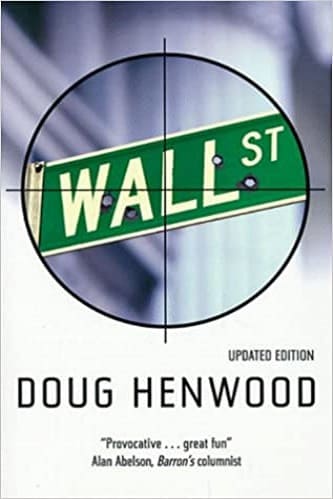
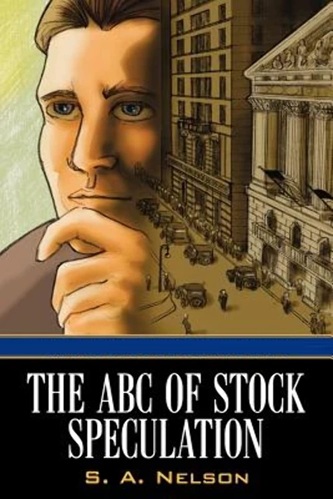
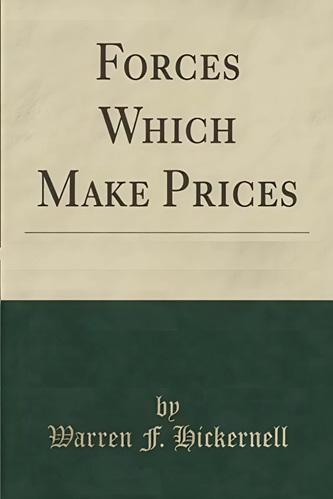
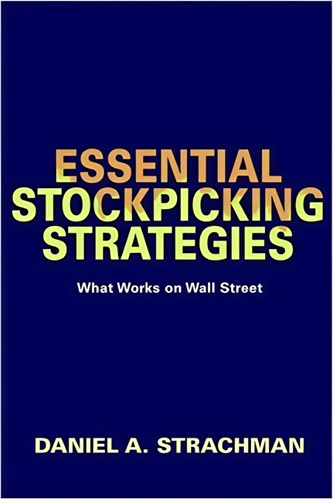
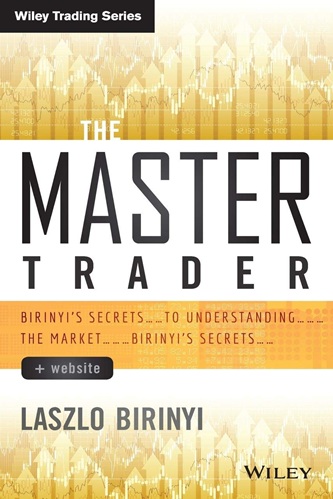
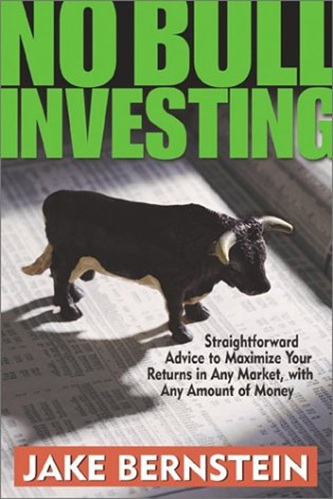


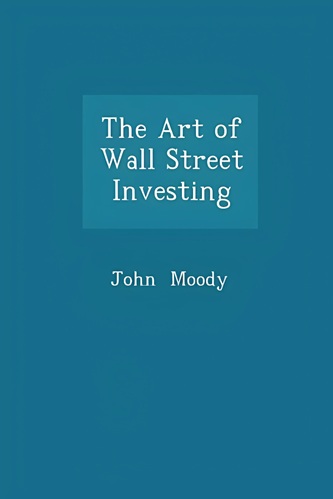
Gianna Hancock (verified owner) –
It’s easy to forget that the world of investing is not always the benevolent opportunity and smooth-running system that the personal finance magazines and a never-ending bull market can make it appear to be. This book does an admirable job of not only reminding that there’s a ruthless side to Wall Street, but also elegantly explaining some pretty sophisticated financial concepts.
Bronson Marks (verified owner) –
Toward the end of the second Big Bull market of the 20th century U.S. (the first was in the 1920s), it’s refreshing to read a book whose author doesn’t fall for the hype. Henwood’s critical analysis is extremely illuminating even to those who disagree with his political perspective (which is unfashionable left-of-center). His prose is as clear as can be. His focus is all-important: what is the impact of Wall Street’s prosperity on the rest of us?
Kennedy Montgomery (verified owner) –
This is an impressive book; well researched, written in a detached and scholarly way, yet full of humour, it convincingly shatters most of the myths that have shaped economic policy in the world since the mid-seventies. Henwood claims, supported by a lot of evidence, that stockmarkets fulfill no useful purpose as far as production of real goods and services is concerned; we could abolish them with no loss for the economic well-being of society. More: he demonstrates that the enhanced power of stockmarket investors over corporations – a phenomenon that goes back to the mid-seventies, for until then American capitalism was content, for all practical purposes, to leave control to managers – had disastrous consequences for the standard of living of employees (i.e. most of the population): reduced growth and investment rates, massive layoffs, shrinking wages, etc. This, of course, had already been stated in dozens of other books on the subjects of Wall Street, Corporate America, Reaganism,etc; but Mr. Henwood goes far beyond the mere “corporate trashing” shool of litterature. He introduces the hipothesis that the abandonement of keynesianism – and the consequent adoption of monetarism – as the main doctrine in the academic and economic policy centers of the western word since the seventies was a direct consequence of a new political and ideological strategy of American and European elites: faced with the growing confidence of an increasingly restless and uncontrollable working class “pampered” by decades of growth, full employment and a welfare net that gave “them” a sense of security and empowerment, the ruling classes of the West slowly but effectively began to implement a cure of austerity. Clamping down on demand because of supposedly “high” prices, increasing interest rates, reducing deficits, striving to reach a “natural” rate of unemployment that meant throwing thousands on the dole queues – all in the name of the new economic ortodoxy of monetarism – slowly eroded the economic and consequently also the political power of non-elites. No wonder then if the nineties have been a decade of undisputed rule by corporate and financial elites on both sides of the Atlantic. Mr. Henwood concludes his book with a few Keynesian prescriptions (do’s and dont’s) to overcome the present situation: don’t privatise social security, tax wealth (like Switzerland presently does, as he reminds us), tax currency transactions and stockmarket investments, above all go for a policy of growth and full employment. There are, he says, no sound economic reasons not to follow this line of action, but of course elites will do everything in their (enormous) power to prevent a return to any form of Keynesianism, however mild. Henwood’s analysis and conclusions are thus really an Appeal to Reason: a world where the ideas of Keynes are seen by the establisment as a dangerous form of radicalism must no doubt be out of its mind.
Alex Conner (verified owner) –
I have worked on Wall Street and I have to say this gives a pretty decent macroeconomic view of Wall Street. He explains stocks, bonds, derivatives, currencies, the Federal Reserve, Bretton Woods, the (in)efficiency of markets and many other topics. He then interprets what these things mean from a leftist perspective. The financial world is heavily right wing and accuses the left wing of not understanding how economics work and thus why the right wing is right about economics. This book will demystify acronyms like LIBOR, GDP and CAPM, and explain to you in Wall Street terminology how the rich are robbing the working class in this country (and the world) blind. Henwood’s book, like Marx’s Capital, is at heart an economic treatise with political ideas sandwiched in between the economic data and analysis. I said at the beginning I have worked on Wall Street and that is the truth – once you see the machine up close, or even become a cog in the machine, you realize how right people like Mr. Henwood really are.
Rachel McCarty (verified owner) –
Wall Street is that most rare thing, a critique of capitalism that knows what it is talking about. Doug Henwood has been writing about Wall Street for some time. He produces the Left Business Observer, subtitled ‘accumulation and its discontents’, which looks like a cross between a bulletin for investors and a revolutionary manifesto. Henwood’s insider knowledge of Wall Street means that he can be as radical as he likes, without being shrugged off as inconsequential.
Henwood is scathing about the idea that the stock market and its financial off-shoots exist to mobilise resources for production. As he points out, that is not what they have been doing. If anything the mergers and shake-outs are about taking resources out of production where profits are low. Over and over again Henwood emphasies the divergence between making money on the markets and real production. As he points out, growth in the stock exchange can as easily reflect faltering production as a boom.
Henwood reports the growth of investor-power in the USA, the increasing clamour for a greater return on their stock. Astutely, he traces its origins to the first stirrings of ethical investment, when small investors first started to make their voices heard at shareholders meeting by demanding disinvestment from apartheid South Africa. But as Henwood notes, what started with the highest of intentions quickly turned into furious demands for bigger dividends, to be paid for by more lay-offs.
Henwood’s sources are eclectic: the most up-to-date neo-Keynesians jostle Sandor Ferenczi’s psychoanalytic theories of money, Karl Marx’s Capital and even the lyrics of a song by eighties punk band the Slits. But what keeps Henwood sharp is his basic intuition that it is the whole system that is at fault, not any singular feature of it. Introducing a chapter on the key players, he says that he could go on about Ivan Boesky and other disgraced traders, but that would only make the rest look artificially good. And, by way of a conclusion (‘What is (not) to be done’), Henwood explains the weakness of every piecemeal scheme of reforming the markets, from ethical capitalism, to democratising the federal bank.
In that spirit he knows, too that the current trend for knocking the financial markets only to praise capitalist industry must be wrong. The reason is that the perverse growth of the financial markets is a symptom of the slow-down of capitalist investment, but not its cause.
Monica Gaines (verified owner) –
Critics of America’s financial system (capitalism) have pointed to economic deficiencies such as recessions, depressions, unemployment (and underemployment) and so forth as cracks in the system, and with a lot of these cracks popping up recently I’ve become more interested in the financial system and what’s wrong with it. Doug Henwood’s book “Wall Street” is very helpful in that respect. We also see a picture of economic history that for some reason we don’t see in the news much: over the past thirty years, hours worked have increased, productivity has increased enormously, wealth for the rich has increased enormously but household debt has exploded as hourly wages (inflation-adjusted) have fallen. This is a very interesting trend which I didn’t even know about until I read Henwood’s book. I guess I’d heard people mention it in passing, but until he lays out the data, where it came from (BLS, Federal Reserve, NBER etc.), puts it on charts etc. it doesn’t really hit you as being real as opposed to rhetoric.
Economic books can be dry reading, thus Henwood’s wit helps make the reading more enjoyable. Henwood’s sympathies also seem to lay with working class people over the rich who the financial markets usually serve, which makes reading easier as well as I don’t have to read every passage critically wondering if he is trying to BS me into believing something that’s against my interest to believe. This book got me interested in Henwood’s other ventures – his newsletter, magazine, radio show, web site, mailing list etc. and they are all interesting as well. I hope every American reads this so they can understand better how this economic system works – after all, the fact that you spend most of your time in life working in order to get money means that *understanding* how money works is one of the more important things in life, right?
Maximiliano Velez (verified owner) –
This is a cut above the usual leftist whining about the horrors of capitalism. Henwood at least understands American high finance and has many pithy things to say about them, some of them all too true. He is quite right in sensing that all is not well with Wall Street and the stock market. Where he falls short is in his theoretical grasp of the situation. Here his left-wing bias, which gives him such a sharp eye when it comes to seeing institutional problems with Wall Street, leads him astray in bringing perspective to his institutional insights. Like the academic economists he excoriates, he does not fully understand how credit excess has completely distorted financial markets and made them much less efficient than they otherwise would have been. To be sure, he is right to say that markets are not 100% efficient. Markets merely give indications of whether past market decisions have been well informed or not.
I cannot help mentioning one troublesome little point about Henwood’s analysis: while Henwood is correct to insist that Wall Street and corporate capitalism in general do not allocate capital as efficiently as an omniscient critic, with the benefit of hindsight, would, this does not mean that capital could be allocated more efficiently if we adopted another system or simply abolished the stock market altogether. The problem is, what is the alternative? To date, no one has yet demonstrated that there is a workable alternative that allocates capital better than capitalism.
Rex Pena (verified owner) –
First a word about the publishing house: Verso Publishing is probably the finest publishing house in the world. When in a bind simply pick up any one of their titles and one cannot go wrong. It’s imperative to read at least a few of their books at least once.
Henwood’s Wall Street blows the lid off high finance like few other works. It’s the definitive critical analysis (along with some of William Greider’s books) of the high circles of wealthy investors.
Throughout Wall Street it rips apart the Federal Reserve Board and exposes its gritty innards. Henwood demonstrates that the Fed is an undemocratic institution that’s obsessed with any hints of labor militancy, its biggest fear being wage inflation.
The Monetary School is also dissected by Henwood, being exposed as the fraudulent theory it truly is (or clever ruling class ideology). He points out that the Monetarists’ ostensibly blamed the federal government for the Great Depression. Of course this has the fascinating effect of letting capitalism completely off the hook. The concepts of over productivity and income polarization, which were the defining characteristics of the 1920s, are rarely to be found in their school of thought.
Constant pressure by Wall Street for ever higher stock prices is what spurred most of the downsizing during the last decade according to Henwood. He smartly points out that this pressure for quick profit growth can often squelch research and development and investment projects which would benefit society. Because shareholders may very well deem these projects irrelevant to short-term profit growth.
Underlying Wall Street throughout Henwood continually pays homage to Karl Marx and some of his incredibly accurate predictions. He also demolishes old shibboleths such as the well worn canard that higher wages automatically translate into reduced employment opportunities, or that rising stock prices always mean a rosy economic picture for the general population. Wall Street proves that rising stock prices can often coincide with a poor economy for the masses.
Henwood documents the fraudulent work done by professional money managers who’d be better off throwing darts at a dart board than using their investment “skills” when making investment decisions for clients.
Some of the most important and informative sections deal with the rising consumer debt of the average American citizen. Being leveraged to the hilt, the family unit has basically been turned into a player in a giant Ponzi scheme. Capitalism in the United States desperately relies on credit-financed consumption to stay afloat.
Most books dealing with such an overarching topic give a paltry and dissatisfying “What is to be Done” final chapter. This isn’t the case for Wall Street. Henwood offers up many concrete and plausible solutions. Finally at one point asserting that an authentic financial transformation must be made along with an attack on capitalist social power in general.
Blaise Bailey (verified owner) –
You know, that guy Michael Lewis writes these flash books about flash trading and other Wall Street phenomena, but none of them gave me the foundation for my judgment on the place that this book did, that it is a zero sum game, that the money does not go into capital improvements, that it is a great big cash re-distributor that favors the biggest players. Detailed, objective, straightforward, this book is the best book about Wall Street, in its entirety, that someone who is just looking into what the world of high finance is about should just go out and read.
Emelia Mills (verified owner) –
As the title indicates, this book is an introduction to Wall Street – how it works and for whom. The book is composed of seven chapters as follows:
1- Instruments: This chapter covers the range of instruments traded on Wall Street, such as stocks, bonds, derivatives, currencies etc.
2- Players: This chapter covers the main stakeholders including households, nonfinancial business, financial institutions, the government etc.
3- Ensemble: This chapter discusses how the markets are intertwined, with a focus on credit, finance and the economy, allocation etc. It also includes a sample trading week to put these concepts into action.
4- Market Models: This chapter presents the numerous financial models that have been devised to simulate the market. It also discusses features of these markets, namely efficiency, disinformation, noise, fads, and bubbles.
5- Renegades: This chapter discusses in detail the Keynesian view of the markets, as well as those of Marx.
6- Governance: This chapter is about Corporate Governance, with a section on the relation of Wall Street and the government.
7- What is (not) to be done?: This last chapter includes the author’s thoughts on a number of economic issues such as social security, the Fed, investing socially, taxation, corporate transformation.
The breadth of topics discussed within this book is commendable, backed by a plethora of references for further reading in areas of interest. Chapters 1 and 2, serve as a great introduction and primer on the financial markets. The insight, stories and practical example presented make this book accessible. A final, and important comment to keep in mind, is that the author presents the content of the book (particularly the later chapters) from a leftist perspective.
Alondra Michael (verified owner) –
excellent!
Octavia O’Neill (verified owner) –
If you like a lot of information and can stay focused while reading a very detailed book this is very good. I have read 3 books on Wall Street and this is one of the best.
Anaya Coleman (verified owner) –
SO incredibly boring.
Micah Frazier (verified owner) –
This book is a classic. Some of the numbers are a few years old, but the institutional factors described by Doug Henwood, who runs an excellent website http://www.leftbusinessobserver.com which features a weekly radio show and podcast that has some of the most knowledgeable and interesting guests, are as important to understand and as true as ever. I highly recommend his podcast/radio show, and enjoy his presentation, writing style, and contributions.
Talon Fletcher (verified owner) –
This book will not teach you how to pick stocks. Rather, it offers an unusual and deep perspective on how the markets (mal)function. Although the author has a clear anti-capitalistic (or more specifically anti-current-incarnation-of-capitalism) bias, the book is well written and researched. I believe the information it contains is extremely relevant today. The author makes a number of valid, undeniably prescient points, even if I am not quite sure that the solutions he offers would necessarily lead to the desired outcomes. A fair warning: readers who cannot bear anything philosophically related to Marxism may experience allergic reactions. For those students of the markets willing to keep an open mind, Mr. Henwood’s book is a must-read.
Marcel Lopez (verified owner) –
Ten years have passed since the publication of Henwood’s paperback edition. In economic terms, that’s an eon, so why bother in 2008 with a 10-year old book, given all that’s happened financially in the meantime. Mainly, I wanted insight into how Wall St. really works. For a layperson such as myself, the lexicon and mechanics of the stock market are as untranslateable and arcane as the Runic alphabet. However, I didn’t want one of those texts that uncritically repeats the official version every time a probing question appears– you know, about how the market sends investment signals while directing funds into the most promising sectors of production. Sounds good, but I’ve been around long enough to separate theory from reality and recognize a self-serving statement when I see one.
So I picked up Henwood’s tome for two reasons: the first three chapters define the basic lexicon and mechanics of the market, while the remainder presents contrasting points of view on how the markets really function. Sure, in the latter context, Henwood has positive things to say about capital’s arch-enemy Marx, but considering how wealth is actually distributed– or more accurately, not distributed– Marx deserves a hearing, along with other critics, notably Keynes. How ironic that we as a culture are so quick to blame Marxist theory for its practical failings, but refuse to blame official capitalist theory for its 300 years of gross inequality and trickle-down. But then, I guess that’s the function of apologetics, which among other benefits does offer the “exogenous” ready employment.
The first three chapters worked pretty well for me. I’m somewhat more conversant about “derivatives”, “calls”, “puts” and the rest. But I would advise other interested neophytes to pay attention in those boring highschool or college classes that really teach at the elementary level because Henwood does assume a certain level of sophistication in those explanatory opening chapters. Then too, the text is interlarded with refinements of one sort or another, e.g. “q-ratio”, that may illuminate at a more advanced level, but nonetheless, cloud the explanatory level. But what there is of a disparity probably lies more with my hopes rather than with Henwood’s exposition.
The discussion section, particularly the chapter on “renegades”, is itself worth the purchase price. Both there and in the succeeding chapter, Henwood presents data and theory showing why and how Wall St. diverges from the official version of the securities markets. There’s plenty here to mull over, and I agree with the reviewer who said the book should be required reading at business schools (fat chance!). The value of these heterodox perspectives remains as important now as 10 years ago, given the current crisis in the derivitives markets and its capacity to bleed through the entire financial system. In that key sense– i.e. as deeper background to recent developments– the book, I’m happy to say, hasn’t dated at all.